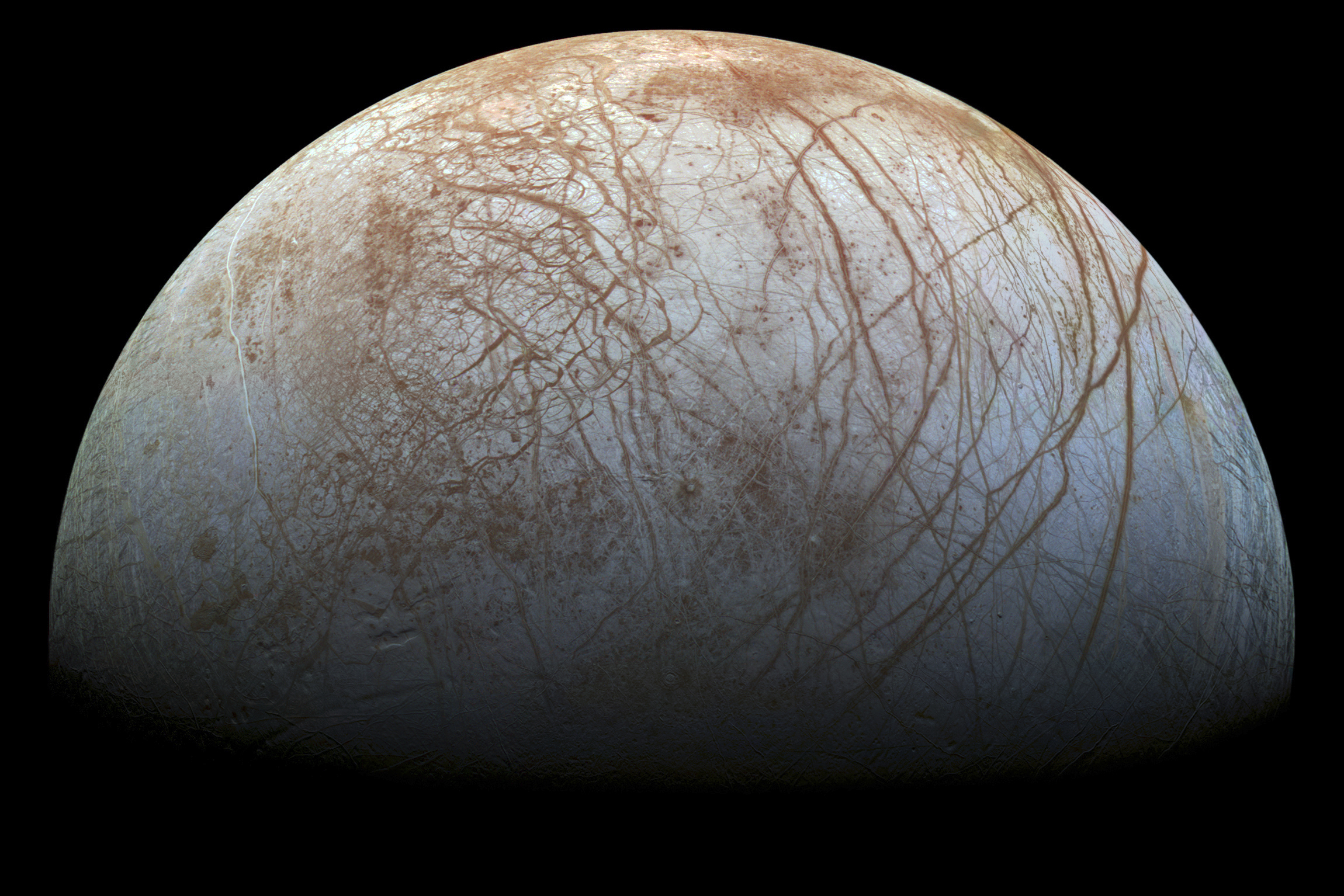The NASA’s Juno spacecraft has sent the first close-up image of Europa to Earth. An icy moon of Jupiter, in which he reveals the surface features of a region near the equator called Onvn.
The picture was taken yesterday in the distance 352 kilometers Less than 500 kilometers, the third close pass in history, and the closest look a spacecraft has ever given the moon, since NASA’s Galileo spacecraft took it in 2000.
Europe It’s the sixth largest moon in the solar system, slightly smaller than Earth, and scientists believe there’s a salty ocean beneath a layer of ice several kilometers thick, raising the question of whether it harbors conditions for life.
The image is a close-up of a part of the surface north of its equator, and because of the contrast between light and shadow found at the terminator (the line separating it from the night side), you can easily see the topographical features.

About A steep sectionTall blocks cast their shadows, while light and dark ridges and troughs curve the surface, NASA said in a statement.
During the flyby, it obtained very high resolution images of the Moon (1 kilometer per pixel) and valuable data on the structure of the ice, its interior, its surface and the composition of its ionosphere. to interact with Jupiter’s magnetosphere.
Juno had just two hours to collect data from Europa, and by that time it was traveling at about 23.6 kilometers per second, and while it was still “very early,” everything indicated the flyby was “a huge success.” Scott BoltonPrincipal investigator for work at Southwest Research Institute in San Antonio.
Juno’s new data on Europa’s geography will aid future missions to Jupiter’s moon, such as Europa Clipper, planned for 2024, which will study its atmosphere, surface and interior. Can lead a life.
(with information from EFE)
Continue reading:



:format(jpeg):focal(3335x1925:3345x1915)/cloudfront-us-east-1.images.arcpublishing.com/gfrmedia/XWBJAEDZEBDWJATZZVBUK34RM4.jpg)
